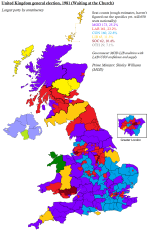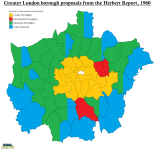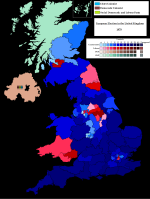I haven’t really posted much TL stuff here, but since I’m working on an idea for one at the moment, I figured I’d post a little something from it. It’s called
‘Waiting at the Church’, and it’s my first UK ATL for quite a while.
The PoD is Jim Callaghan calling an election in winter 1978 rather than holding off until spring 1979. While Labour appear to have the advantage early on, the Tories run a strong campaign and in the end Thatcher wins power, but with a majority of just 10. She aggressively whips the party to enact public spending cuts and pushes for privatization, but soon starts alienating the ‘wets’ to an even greater extent than in OTL.
The cuts are met with substantive strike action from trade unions, paralyzing many industries and sectors in a manner akin to (if not more extensive than) the Winter of Discontent, and the spending cuts cause unemployment to surge. By the end of 1979, Thatcher has become even more unpopular than in OTL, but still commands the steadfast support of the Tory right.
On the left, Labour has badly fractured with a similarly divisive leadership contest to OTL leading to the same result, i.e. Foot succeeding Callaghan and the right of the party breaking off. In TTL, however, the Gang of Four had been in discussions with prominent ‘wets’ and the Liberals to form a third front against the two main parties. This culminates in January 1980 with the formation of the Moderate Party, which soon sees a massive surge in support and manages to secure the defection of a large contingent of members of both Labour and the Tories.
At the Southend East by-election in March, the Moderates stand Shirley Williams, who captures the rock-solid Tory seat by a sizeable margin. In her first speech in Parliament since leaving it a year and a half prior, she announces the Moderates’ plan to introduce a motion of no confidence in the Thatcher government, which passes in early April.
Thatcher, condemning the ‘treachery’ of the Commons, seeks a dissolution of Parliament, but it goes poorly for both the Tories and Labour as the Moderates and Liberals form an electoral pact and win more than enough seats combined to hold the balance of power. Since the Moderates won more seats than the Liberals, Williams becomes their prospective Prime Minister, aided by her approval ratings outstripping not only those of Thatcher and Foot, but almost all the other potential Tory and Labour PMs.
Thatcher and Foot resign after Williams is voted into office by the Commons, being succeeded by Michael Heseltine and (in a similarly narrow vote to the 1979 leadership election, but in the other direction) Denis Healey. The Labour left is rattled by its defeat here, and crucially they vote in favour of the Moderate-Liberal Alliance motion to introduce PR, as do the minor parties and a significant minority of Tories seeing an opportunity to split Labour further apart.
The PR system is tabled and then implemented in a sort of compromise fashion, with the majority of constituencies drawn up as two- to four-member districts electing local representatives (aside from the island constituencies, which are too small for multiple members so continue to use FPTP). To proponents, and in the view of most of the public, this allows for a good mix of the fairer representation PR is supposed to provide and the personal accountability of the old single-member FPTP constituency system.
Almost immediately after PR is passed into law, the party system splits again. The Labour left break off to form the Socialist Party, and a smaller faction of the Tory right forms the hard right National Party; it soon becomes clear that without a coalition between the parties, the government has very little capacity to function.
Despite this, since Williams passed the popular PR law, reduced spending cuts and managed to form a settlement with the trade unions (at least temporarily), she felt her position was strong enough to seek a new dissolution of Parliament at the end of 1980, with the date of the next election set for the 5th February 1981.
That’s the election shown here, and as you can tell, the Moderates do pretty well out of it, becoming the largest party by a narrow margin. Having said that, despite both having their membership ripped asunder Labour and the Tories holds up relatively well, and the personal votes of many Socialist candidates (as well as Labour voters in areas like Liverpool and the South Wales valleys sympathising with the party’s more left-wing stance) helps them outperform expectations. Ironically, the Liberals don’t make especially large gains from the new system, as the new Moderate-Liberal pact sees them stand down in the Moderates’ favour in much of the country in exchange for Moderate campaign support in areas friendly to them.
Between them, the Moderates and Liberals have 238 seats, far ahead of the traditional major parties, and Williams enters negotiations with both Labour and the Tories hoping to form a coalition with a comfortable majority in the Commons. Despite the ideological closeness of the rump parties to each other, this is not to be- the Tories refuse to go into coalition after doing so the first time led them to their worst result in almost 150 years, and Labour are wary of allying with the Liberals after the Lib-Lab pact.
What Williams is able to secure is a new confidence and supply arrangement, and one where the government is much more stable since the Moderates now have a substantial grouping in the Commons and a mandate of sorts.

So yeah, I'm open to feedback on this idea, and particularly stuff like how realistic the voting patterns on the map seem and the alternate Labour split, since I'm still undecided on stuff like who in the Gang of Four would make sense as a prospective PM (I considered Roy Jenkins but then changed my mind and went with Williams instead).




